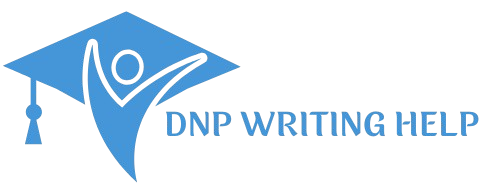One of the most challenging aspects of iHuman assignments is iHuman management plan writing. After taking a patient history, performing a virtual physical exam, and formulating differential diagnoses, students must create a structured, evidence-based plan that outlines how the patient will be treated, monitored, and educated. This step is crucial because it reflects your ability to move from theory into practice. At DNP Writing Help, we provide professional support to help students craft comprehensive and patient-centered management plans that not only meet academic requirements but also prepare them for real-world nursing practice.
Table of Contents
What is an iHuman Management Plan?
A management plan in iHuman assignments is essentially your roadmap for patient care. It goes beyond identifying the diagnosis—it explains exactly how the patient’s condition will be managed, monitored, and improved over time.
Typically, an iHuman management plan includes:
- Immediate treatments and interventions
- Medication selection and dosage considerations
- Lifestyle and behavioral modifications
- Patient education and counseling
- Referrals to specialists if needed
- Follow-up and monitoring strategies
- Cultural and individual considerations
This plan demonstrates your clinical judgment, critical thinking, and ability to apply evidence-based guidelines.
Why iHuman Management Plan Writing Matters
Crafting a strong management plan is essential for several reasons:
- Demonstrates Competence – Your instructors evaluate your ability to apply knowledge in a clinical scenario.
- Enhances Critical Thinking – Writing the plan forces you to prioritize care and justify your decisions.
- Prepares for Real Practice – Nurses often design care plans in hospitals, making this skill directly transferable.
- Promotes Patient-Centered Care – Including education, follow-up, and cultural sensitivity ensures holistic care.
A poorly written plan may show gaps in reasoning, while a detailed one proves that you are ready for advanced clinical responsibilities.
Key Components of an iHuman Management Plan
1. Treatment & Interventions
This section explains what actions you will take immediately and long term. Treatments may involve prescribing medications, initiating lifestyle modifications, or performing therapeutic interventions.
Examples:
- Hypertension: Prescribe first-line antihypertensives, recommend low-sodium diet, exercise, and stress reduction.
- Asthma: Prescribe inhaled bronchodilators, corticosteroids, and educate on trigger avoidance.
Your interventions should align with evidence-based guidelines, such as the American Heart Association (AHA) or CDC recommendations.
2. Patient Education
Patient education is often overlooked, but it is vital. Nurses are educators as much as they are caregivers. Your management plan should explain:
- How to take medications properly
- Possible side effects to monitor
- Lifestyle changes (diet, exercise, smoking cessation)
- Home monitoring (blood glucose, blood pressure, etc.)
Education must be clear, simple, and culturally sensitive, empowering patients to manage their own health.
3. Referrals & Collaboration
Not every condition can be managed alone. Referrals ensure patients receive specialized care.
Examples:
- A diabetic patient → dietician for meal planning
- A patient with chronic back pain → physical therapist
- A child with developmental issues → occupational therapy
Collaborating with other professionals shows an understanding of team-based healthcare.
4. Follow-up & Monitoring
Your plan should include how and when you will reassess the patient. Follow-up care prevents complications and ensures treatment effectiveness.
Examples:
- Rechecking blood pressure in 2–4 weeks after starting antihypertensives
- Ordering labs to monitor kidney function when on certain medications
- Scheduling imaging or specialist appointments when needed
Clear follow-up timelines make your plan practical and professional.
5. Cultural & Patient-Centered Considerations
Every patient is unique, and their cultural or personal background can influence care. Tailor your plan to their needs.
Examples:
- Dietary advice should respect cultural food traditions
- Exercise recommendations should match physical ability and age
- Religious practices should be acknowledged in treatment planning
This patient-centered approach demonstrates empathy, professionalism, and cultural competence.
Common Challenges in iHuman Management Plan Writing
Even though iHuman assignments are designed to simulate clinical practice, many students face difficulties when it comes to writing the management plan. Here are some of the most common challenges in detail:
1. Uncertainty About Evidence-Based Guidelines
One of the biggest hurdles is knowing which clinical guideline to follow. Should you use AHA guidelines for hypertension, ADA standards for diabetes, or general CDC recommendations? Many students are unsure which source is the most current or appropriate for the case. Relying on outdated or vague resources weakens the credibility of the plan.
Tip: Always confirm the latest recommendations from trusted sources such as the American Heart Association, American Diabetes Association, or WHO. Using up-to-date guidelines not only strengthens your plan but also demonstrates professional-level clinical judgment.
2. Writing Plans That Are Too Vague
A common mistake is writing something general like “The patient will be treated with appropriate medication” without naming the drug, dose, or rationale. Vague statements suggest a lack of critical thinking and often result in lost marks.
Tip: Be specific. For example, instead of “treat with medication,” write “Start patient on Lisinopril 10mg once daily as a first-line ACE inhibitor for hypertension, with monitoring of kidney function in two weeks.” This shows precision, evidence-based reasoning, and attention to patient safety.
3. Forgetting Patient Education and Lifestyle Modifications
Many students focus heavily on medications but fail to include patient education and self-care strategies, which are crucial parts of nursing care. Without education, even the best treatment plan can fail due to poor patient adherence.
Tip: Always include clear instructions for the patient, such as teaching proper medication use, monitoring symptoms, diet and exercise advice, and stress management strategies. Remember that patients need knowledge as much as they need prescriptions.
4. Overlooking Follow-Up and Monitoring
Some students stop at diagnosis and treatment, forgetting that follow-up is what ensures long-term success. Without specifying when to recheck labs, blood pressure, or symptoms, the plan feels incomplete.
Tip: Always include monitoring intervals (e.g., “Follow up in 2–4 weeks to reassess blood pressure and evaluate medication tolerance”). This detail makes your plan practical and clinically sound.
5. Ignoring Cultural or Social Factors
Another common error is assuming all patients can follow the same plan. Not considering financial limitations, dietary restrictions, or cultural practices can make your plan unrealistic.
Tip: Always think from the patient’s perspective. Can they afford the medication? Do their cultural or religious beliefs affect diet or treatment choices? Tailoring your plan to individual needs demonstrates empathy, professionalism, and cultural competence.
Expanded Example of an iHuman Management Plan (Hypertension Case)
Diagnosis: Stage 1 Hypertension (140/90 mmHg on repeated readings)
Treatment & Interventions
- Medication: Start patient on Lisinopril 10mg orally once daily (ACE inhibitor), adjusting based on tolerance and follow-up lab results. If intolerant, consider a calcium channel blocker (e.g., Amlodipine 5mg).
- Lifestyle modifications:
- Recommend DASH diet (high in fruits, vegetables, and whole grains; low in sodium and saturated fats).
- Encourage aerobic exercise (at least 30 minutes/day, 5 days per week).
- Suggest reducing caffeine and alcohol intake.
- Recommend stress-reduction techniques such as yoga, meditation, or deep breathing exercises.
Patient Education
- Teach the patient to monitor blood pressure at home daily and keep a log.
- Educate about possible side effects of Lisinopril, including cough or dizziness, and when to report them.
- Stress the importance of adhering to both medication and lifestyle changes.
- Explain the dangers of untreated hypertension, such as stroke, kidney disease, and heart attack.
Referrals
- Nutritionist/Dietician: For personalized dietary counseling on low-sodium meals and weight management.
- Smoking cessation program: If patient is a smoker, refer to behavioral support or nicotine replacement therapy programs.
- Mental health counselor or stress management class: If stress is identified as a trigger.
Follow-Up & Monitoring
- Short-term: Schedule follow-up visit in 2–4 weeks to recheck blood pressure and assess side effects of medication.
- Labs: Order kidney function tests and serum electrolytes within 2–4 weeks of starting ACE inhibitor therapy.
- Long-term: Monitor blood pressure every 3–6 months once controlled, with annual comprehensive exams.
Cultural/Patient-Centered Considerations
- Adapt dietary recommendations to include culturally preferred foods while keeping sodium low.
- Consider patient’s financial situation—if branded medications are too expensive, suggest affordable generics.
- Respect cultural practices during counseling, e.g., incorporating community support or family involvement if preferred.
How DNP Writing Help Supports You
At DNP Writing Help, we know that iHuman management plan writing can be stressful, especially when balancing coursework, deadlines, and clinical rotations. Our services are designed to make the process easier by:
- Reviewing your case scenario to ensure accurate interpretation
- Guiding you through evidence-based guideline application
- Helping you write clear and structured management plans
- Including patient education, follow-up, and cultural considerations
- Customizing each solution to match your specific course requirements
We don’t just provide answers—we help you understand the reasoning behind each step so you can apply it in both academic and clinical settings.
FAQ iHuman Management Plan Writing
What is an iHuman management plan?
An iHuman management plan is the section of your case study assignment where you outline how to treat, monitor, and educate the patient based on their diagnosis. It includes medications, lifestyle interventions, referrals, follow-up care, and patient-centered considerations.
Why do students struggle with writing iHuman management plans?
Common challenges include being too vague, forgetting follow-up instructions, leaving out patient education, or not using evidence-based guidelines. Some students also overlook cultural and financial factors that influence care.
What should a strong iHuman management plan include?
A good plan should have:
Diagnosis (with justification)
Treatment & Interventions (medications, lifestyle modifications)
Patient Education (instructions on adherence, lifestyle, and monitoring)
Referrals (to specialists or programs)
Follow-up & Monitoring (clear timelines for reassessment)
Cultural/Patient-centered considerations (tailoring care to the individual).
How detailed should the management plan be?
It should be specific and evidence-based. For example, instead of writing “start medication,” specify the class of drug (e.g., ACE inhibitor for hypertension) and justify why it is appropriate.
Do I need to include cultural or social factors in my iHuman plan?
Yes. Considering the patient’s culture, beliefs, and financial situation strengthens your plan and demonstrates holistic, patient-centered care.
How do I use evidence-based guidelines in my management plan?
Refer to authoritative sources like JNC 8 (for hypertension), ADA (for diabetes), or CDC/WHO guidelines depending on the case. Citing these ensures your plan is clinically accurate and academically strong.


